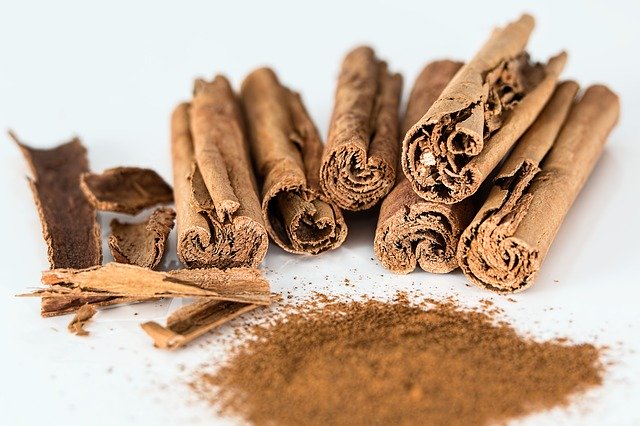Health benefits of cinnamon

Cinnamon comes from the bark of cinnamon, an evergreen tropical tree. There are two species: Cinnamomum aromaticum or cassia (currently the most commercially available) and Cinnamomum zeylanicum or verum.
To obtain the cinnamon, the rind is extracted, left to ferment for 24 hours and the outer layer is scraped off. What remains, the inner layer, is rolled up and allowed to dry.
In this drying process (which can be in the sun) it takes on its characteristic color. Then this “cinnamon stick” is used as is or, more often, in powder form.

Cinnamon Properties
Cinnamon is consumed in a small amount, therefore it does not provide nutrients in significant doses. The most interesting thing about cinnamon is the aromatic compounds.
The aromatic essential oil constitutes up to 2.5% of its composition. The main compounds are cinnamic aldehyde, eugenol and cinnamic alcohol.
In a smaller proportion are trans-cinnamic acid, hydroxycinnamic aldehyde, o-methoxycinnamic aldehyde, cinnamic acetate and linalol and diterpene terpenes, in addition to tannins, mucilage and proanthocyanidins.
All these substances add a great anti-inflammatory and antioxidant power. In a comparative study with 26 other spices, carried out at the University of Hong Kong, cinnamon showed the highest antioxidant capacities, above superfoods such as oregano and garlic.
In fact, it’s so powerful that cinnamon can be used as a natural preservative.
Recommended: 4 Science-backed spice remedies
Cinnamon Health Benefits
The medicinal use of cinnamon dates back thousands of years. Traditionally it has been used to treat respiratory, gynecological and digestive diseases .
Today it is used mainly as an anti-inflammatory, to improve cognitive function and as a regulator of metabolism.
DIABETES AND WEIGHT LOSS
Cinnamon has been shown in scientific studies to improve the sensitivity of cells to insulin and to act significantly on blood glucose levels, even in people with type 2 diabetes.
In addition, cinnamon reduces the negative consequences of eating high-fat foods and with it, along with the action on sugar, can promote weight loss.
There is still another way that sugar helps you lose weight: use it to substitute sugar.
A dose of 1 g is sufficient to obtain a positive effect on glucose levels.
REDUCES THE RISK OF HEART DISEASE
It also acts on the levels of bad LDL cholesterol and triglycerides. One study concluded that only 120 mg daily can achieve positive effects.
Additionally, it has been shown in animal studies to lower blood pressure.
All of these factors combined significantly reduce the risk of having a heart attack.
OTHER BENEFICIAL EFFECTS
Small studies have shown some positive action in disorders such as Alzheimer’s, multiple sclerosis, and chronic wounds.
IS COUMARIN DANGEROUS?
Cinnamon – especially the Cassia variety – contains a small amount of coumaria. This substance, in extremely high doses, can cause some dangerous side effects.
However, when used as a condiment it would be very rare for someone to ingest large enough amounts to suffer any negative side effects.
Cinnamon in the kitchen
You have probably sprinkled rice pudding with cinnamon or added it to other desserts, cookies or cakes, but there are other delicious ways to incorporate cinnamon into your diet.
Many traditional cuisines, such as Indian, Mexican, Middle Eastern, and North African, use cinnamon as the main spice in salty dishes.
Here are some ideas for quick cinnamon recipes:
- Grind flaxseeds and sprinkle them on toasted whole wheat bread, also sprinkle with cinnamon and finally sprinkle with a dash of maple syrup.
- Dip a couple of cinnamon sticks in soy milk with a dash of agave syrup and heat it up for a comforting drink.
- Add cinnamon powder to vegan burritos with black beans.
- Add a little cinnamon to the curried dishes.







